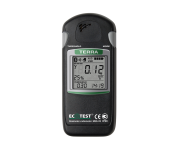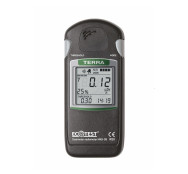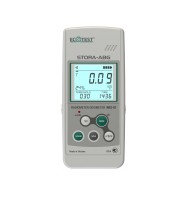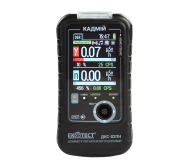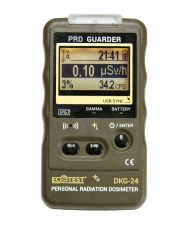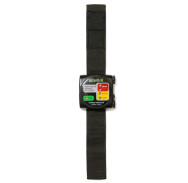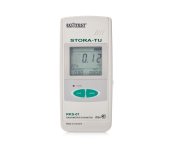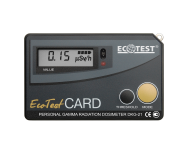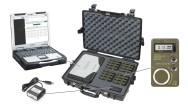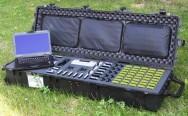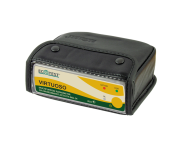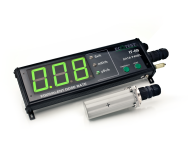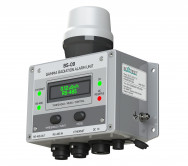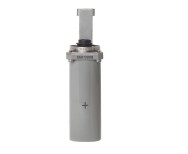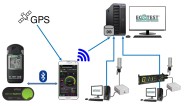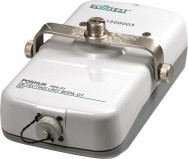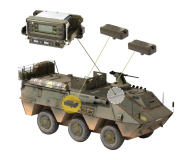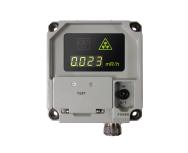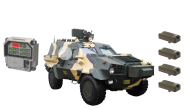Our focus in this article is on human-made ionizing radiation, which has a wide range of diagnostic and therapeutic uses in medicine.
Radiation and Medical X-rays
Ever since Roentgen discovered x-rays in 1895, radiation and medical x-rays became an integral part of diagnostics in healthcare. X-rays are a kind of electromagnetic radiation that an x-ray machine sends at the targeted internal site. X-rays can penetrate clothes, skin and other body tissues, and internal organs.
When the x-radiation passes through our body, our bones and other internal structures that are denser than skin cast shadows. A photographic film captures these shadows. These x-ray photos help in the diagnosis of broken bones, dental and oral health problems, etc.
X-rays are one type of high-energy electromagnetic radiation with the usual wavelength range of 10 picometers to 10 nanometers. That corresponds to the frequency range of 30 petahertz to 30 exahertz. The matching energy range is 100 eV to 200 keV (kilo electronvolt).
X-ray machines have now been connected to computed tomography (CT) scanners. CT scan images produce colored images of internal organs. These images help physicians identify functional or physiological organ problems, detect anomalies’ size , and locate tumors.
Though diagnosis is the most common use of x-rays, they also get used in combination with other forms of radiation for therapeutic purposes. The U.S. Nuclear Regulatory Commission (USNRC) mentions that almost 7 out of every 10 Americans receive diagnostic or therapeutic x-rays at least once in their lifetime.
The use of radiation therapy focuses especially on cancer treatment. It aims at killing cancerous tissue, shrinking the size of the tumor, and pain reduction. Thyroid cancer treatment, for instance.
According to the USNRC, thyroid cancer strikes about 11,000 Americans annually. The use of radioactive iodine, usually iodine-131, is a routine treatment for that.
Radiation Used in Nuclear Medicine
Nuclear medicine is a specialized branch of radiology that uses radiopharmaceuticals or radionuclides to examine the function and structure of organs and tissues. The USNRC informs that healthcare facilities conduct nearly 10 million nuclear medicine procedures every year.
Johns Hopkins Medicine explainsthat radiation used in nuclear medicine entails the use of tiny amounts of a radioactive tracer for organ examination. Standard x-rays cannot adequately capture soft tissues such as blood vessels, intestines, muscles, etc. The use of a contrast agent makes the images clearer.
The main principle of nuclear medicine is to make the targeted organ or tissue radioactive for a short while. The ionizing radiation gets released from that body part. The nuclear medicine camera detects and measures it.
Nuclear medicine imaging involves a multidisciplinary approach including chemistry, computer technology, mathematics, medicine, and physics.
The main advantage of nuclear medicine imaging is to facilitate early diagnosis of diseases like thyroid cancer so that treatment can begin at an early stage of disease progression. A positron emission tomography (PET) scan is a typical example of nuclear imaging.
How is Gamma Radiation Used in Medicine?
The most common use of gamma radiation in medicine is for nuclear imaging. The ionizing radiation emitted from the body because of the use of a radionuclide is usually a gamma-ray. The most common detector used is, thus, a gamma camera.
However, gamma radiation is also used to sterilize medical equipment. The most common process of producing gamma rays for use in medicine is gamma decay. It is similar to other radiation decay processes.
How is Alpha Radiation Used in Medicine?
The most prevalent use of alpha radiation is in cancer therapy. Known as unsealed source radiotherapy, the process involves inserting small amounts of alpha particles into the cancerous tissues.
The alpha particles destroy the cancer cells without damaging the healthy cells surrounding the cancerous part. Radium-226, Radium-223, Cobalt-60, Xofigo, etc. are examples of alpha particles used for radiation therapy in cancer treatment.
So, what is an example of alpha radiation?
Alpha radiation is really an ejected helium nucleus, which is a heavy and short-range particle. Most alpha particles cannot penetrate the human skin. Another typical use of alpha radiation in healthcare besides cancer therapy is to power heart pacemakers.
How is Beta Radiation Used in Medicine
The most common use of beta particles in medicine relates to the process called brachytherapy. In this form of therapy, beta particles get inserted inside a patient’s body to make certain tissues radioactive.
A successful application of brachytherapy is to prevent the clogging of stents, which are a kind of arterial insert.
Beta particles are also sometimes used in cancer therapy. PET scans also involve the indirect use of beta ray emissions.
A Note of Caution
All four types of radiation – alpha, beta, gamma, and x-radiation – have varied uses in healthcare. However, radiation use for diagnosis and/or treatment also has some potential health hazards. It is critical to maintain the internationally accepted basic safety standards (BSSs), therefore.
How Is Radiation Used In Medicine
What is radiation in medicine?
Radiation in medicine refers to the uses of alpha, beta, gamma, and x-radiation for diagnostic and therapeutic purposes. The most common use of radiation diagnosis consists of x-rays, followed by other modern diagnostic tools like CT and PET scans. Common x-rays and CT scans use x-radiation while PET scans use gamma rays with some indirect use of beta particles. Radiation therapy mostly uses alpha radiation for cancer therapy. However, brachytherapy using beta particles is also gaining currency.
Why is nuclear radiation used in medicine?
Nuclear radiation, mostly using gamma rays, is related to nuclear imaging, such as a PET scan. It inserts a small amount of radioactive material to irradiate the targeted part of the body to get a sharp image. That helps in diagnosis and treatment plan formulation.
How is radioactive decay used in medicine?
Radioactive decay, also known as radioactive disintegration or nuclear decay/disintegration refers to a process of energy loss through radiation of an unstable atomic nucleus. Such isotopes are known as radioisotopes. Nuclear medicine uses radioisotopes for both diagnostic purposes and for cancer treatment.

